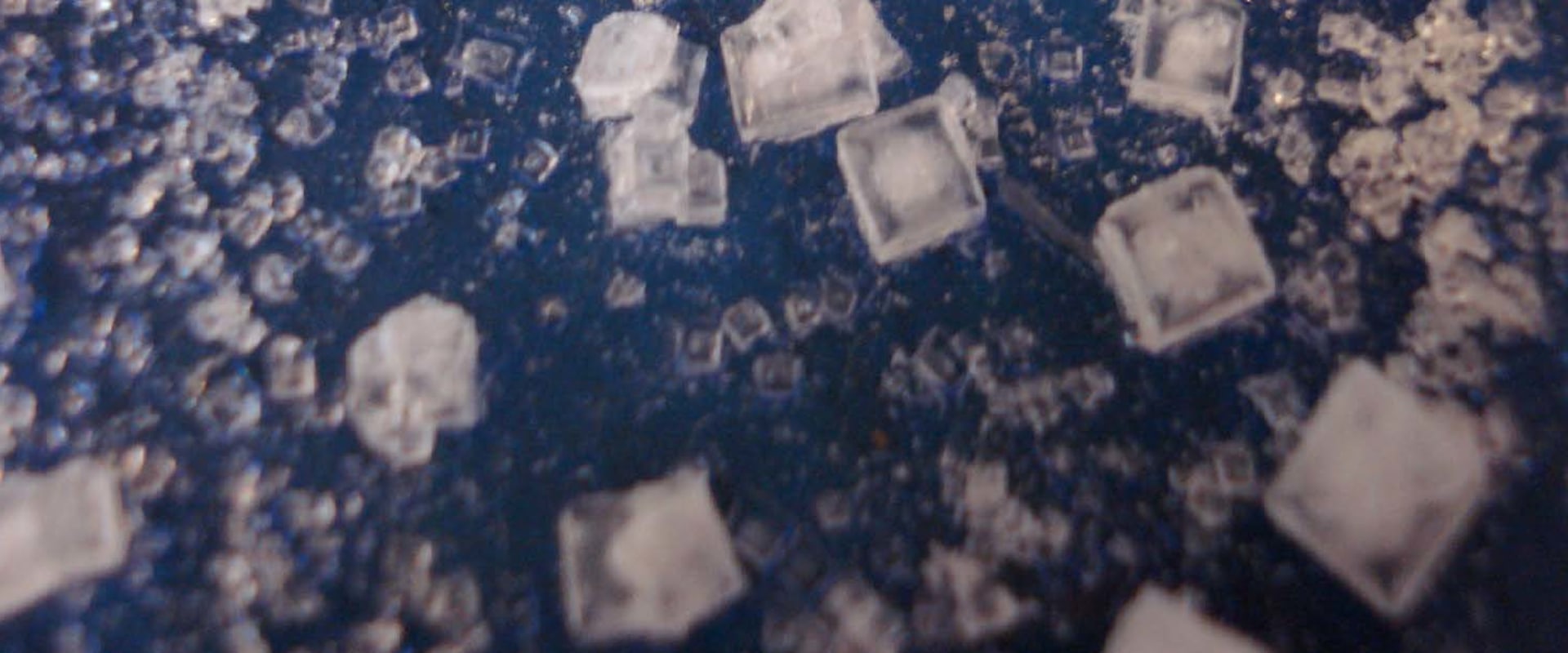Crystals that grow slowly have many advantages over those that grow quickly. Not only do they tend to be larger, but they also have a higher purity. This is because the slow crystallization process allows for more time for the crystals to form and grow. Figure 3.17 shows the crystallization of acetanilide from water at two different rates.
The crystals in Figure 3.17a formed much more quickly and are smaller than the larger, slower growing crystals in Figure 3.17b. In order to give crystals a longer time to grow, the evaporation rate must be controlled. This can be done by covering the plate with aluminum foil and drilling holes in it. The foil delays evaporation compared to an open container, while the holes allow some solvent vapor to escape, preventing a completely closed system. The number of holes in the sheet can be adjusted depending on the volatility of the solvent. The second series of diagrams shows what happens when the solution cools down too quickly.
The impurities of the yellow triangle are trapped inside the crystals that are formed by the orange hexagons, resulting in impure isolated crystals. It is important to note that slow crystallization produces larger crystals than fast crystallization. Small crystals have a large ratio between surface area and volume, and impurities are found on the surface of the crystals and are trapped within the matrix. If crystals don't form when you slowly cool the solution to room temperature, there are a variety of procedures you can perform to stimulate their growth. First, the solution must be cooled in an ice bath.
This slow cooling of the solution leads to a slow formation of crystals and the slower they form, the purer they are. The rate of crystallization decreases as the temperature decreases, so it should only be cooled with an ice bath until crystals begin to form; once they do, the solution should be allowed to warm to room temperature so that crystal formation occurs more slowly. If crystals still do not form even after cooling in an ice bath, pick up a polished stirring rod and etch (scrape) the beaker. The small pieces of glass that are engraved in the glass serve as cores for crystal formation. If crystals still do not form, take a small amount of solution and spread it on a watch glass.
Once the solvent evaporates, the remaining crystals can serve as seeds for further crystallization. Both methods of nucleation (i.e., engraving and seeding) cause very rapid crystallization, which can lead to impure crystals. To prevent this from happening, it is important to transfer the crystals from their mother liquor (the droplet from which they grew) or from a cryoprotective soak to a large drop of Paratone-N oil (Hampton Research, Aliso Viejo, CA, USA). Thaumatin crystals survive slow cooling to T%3D 100 K, with or without soaking in 40% glycerol, and show low temperature diffraction properties that are comparable to or better than those of rapidly cooled crystals. Another way to encourage crystal growth is by using a vial with an angled side. This will encourage crystals to grow on the side of the vial as there is more solvent in contact with it and its angle prevents newly formed crystals from falling directly to the bottom of the vial. If after two weeks no crystals have formed in your sample, it may be time to reconsider your culture technique with solvents or crystals and try another method.
Similarly, crystallization can be considered as a crystal lattice that captures solutes from a solution. If you find that evaporation or slow cooling techniques provide crystals but they are not the right size or shape for XRD, both techniques can be extended to include a binary or tertiary solvent system. Finally, they are more easily collected by suction filtration (Figure 3.1), since very small crystals can pass through or form wedges in filter paper pores, preventing solvent from dripping easily and giving rise to unrecoverable crystals. When all solvent has been removed (or at least when its remaining thickness is much smaller than illuminating light wavelength ~400 nm), crystal almost matches oil index, there is little reflection at oil-glass interface and crystal becomes almost invisible. Bulk solvent surrounding crystal crystallizes rapidly during cooling across T %3D temperature range 240-220 K and must be completely removed for slow cooling and satisfactory X-ray data collection. During this cooling each molecule of solute approaches growing crystal and rests on its surface.
